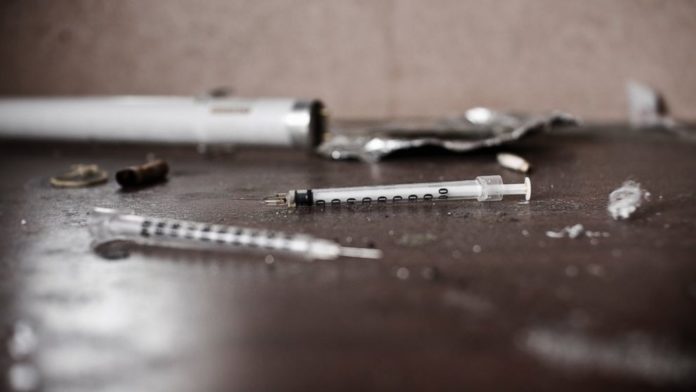
Heroin use and abuse in the United States has skyrocketed, a new report reveals, spreading to include groups who have historically had low rates of heroin use and leading to a dramatic rise in overdose deaths.
The report, released Tuesday by the U.S. Centers for Disease Control and Prevention (CDC), shows that the rate of heroin abuse among U.S. adults increased by an alarming 90 percent between 2002 and 2013. During that same time period, the number of people who reported using heroin at least once in the last 12 months rose by 65 percent, an increase of approximately 300,000 people. In all, more than half a million people used heroin in 2013, up nearly 150 percent since 2007, according to the nationwide findings published in the CDC’s Morbidity and Mortality Weekly Report.
While heroin use continues to be most common among men between the ages of 18 and 25 who make less than $20,000, the CDC researchers note that in recent years people in nearly every demographic group are using the drug more. For instance, heroin use has doubled among women and non-Hispanic white people.
“Heroin use has increased rapidly across nearly all demographic groups,” said CDC director Dr. Tom Frieden. “With that increase we are seeing a dramatic rise in deaths.”
The rate of death by heroin overdose nearly quadrupled between 2002 and 2013, the report said, with 8,200 people dying in 2013. Dr. Frieden put this figure in perspective:
“There are by the best estimate a little over 500,000 people who are addicted to heroin in the U.S. the fact that more than 8,000 of them died in a single year suggests that around 1 in 50 people who are addicted to heroin may die from it in each year of their addiction. That’s a remarkably high proportion and reflection of how dangerous it is to have a heroin addiction, to have heroin supply from sources where the purity may change rapidly, and to use it by an intravenous route.”
Beyond the increase in deaths, the rise in injection drug use also presents serious public health risks. Without regulation or standard dosing, users of heroin face an extremely high risk of accidental overdose due to unexpectedly potent “batches” of the drug. Even more troubling, however, is that injection heroin use is associated with a wide range of communicable diseases, including hepatitis, tuberculosis, and HIV/AIDS. According to the CDC, injection drug users account for about one in ten new HIV cases in the U.S.
“It’s heartbreaking to see the return of injection drug use in the United States,” Dr. Frieden said, noting that health officials have already started reporting clusters of hepatitis C and HIV linked to opioid injection — including the largest-ever HIV outbreak in the state of Indiana, which was declared a public health emergency in March after more than 150 new HIV cases were confirmed in the first three months of 2015. All cases were tied to intravenous drug use.
The rise in heroin use is linked to the latest front in the war on drugs: a nationwide crackdown on prescription painkiller use and abuse. As tightening regulations made prescription opioids harder to find (and thus more expensive), many painkiller users sought out other, cheaper options, including heroin. But as dangerous as painkiller abuse is, the public health risks associated with IV drug use make the dramatic rise in heroin use a particularly alarming trend — a trend that the CDC is calling an “epidemic.”
While the new figures reveal a dire situation, “there are things we can do to make a difference,” Dr. Frieden said. The CDC says comprehensive interventions need to happen at the federal and state levels to address the dual issues of addiction and heroin trafficking. As part of that effort, the federal government is expanding access to substance abuse treatment under the Affordable Care Act and increasing education and training for providers.
States can address the problem by enforcing better prescription drug monitoring programs and increasing access to treatment by implementing the ACA’s Medicaid expansion, which would cover the cost of substance abuse treatment for low-income individuals. Ensuring coverage of medication-assisted treatment is especially important for reducing addiction. Additionally, states should adopt a harm-reduction approach focused on increasing the availability of safe injection equipment (through needle exchange programs), as well as life-saving drugs like the opioid overdose antidote naloxone, the CDC recommends.
“Everyone has a role to play,” said Dr. Frieden. “States, public health, health care providers, families, communities, law enforcement — and to those who may be addicted or become addicted, seek help because treatment works.”
